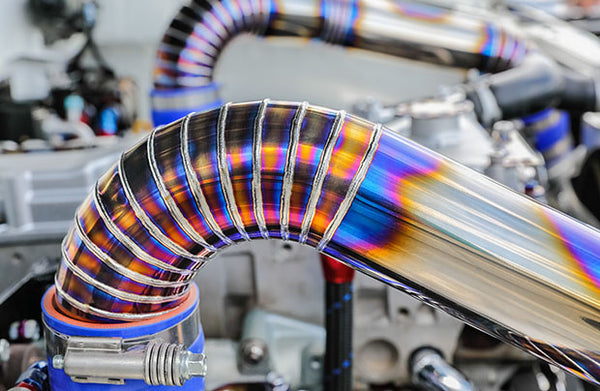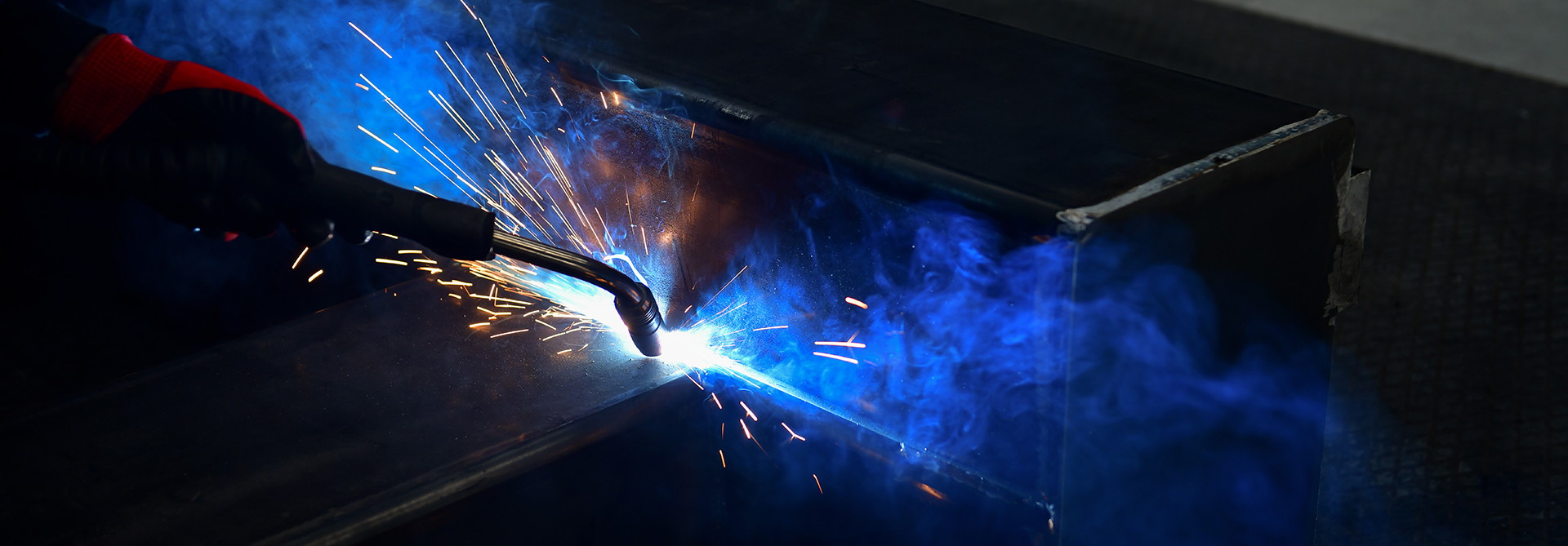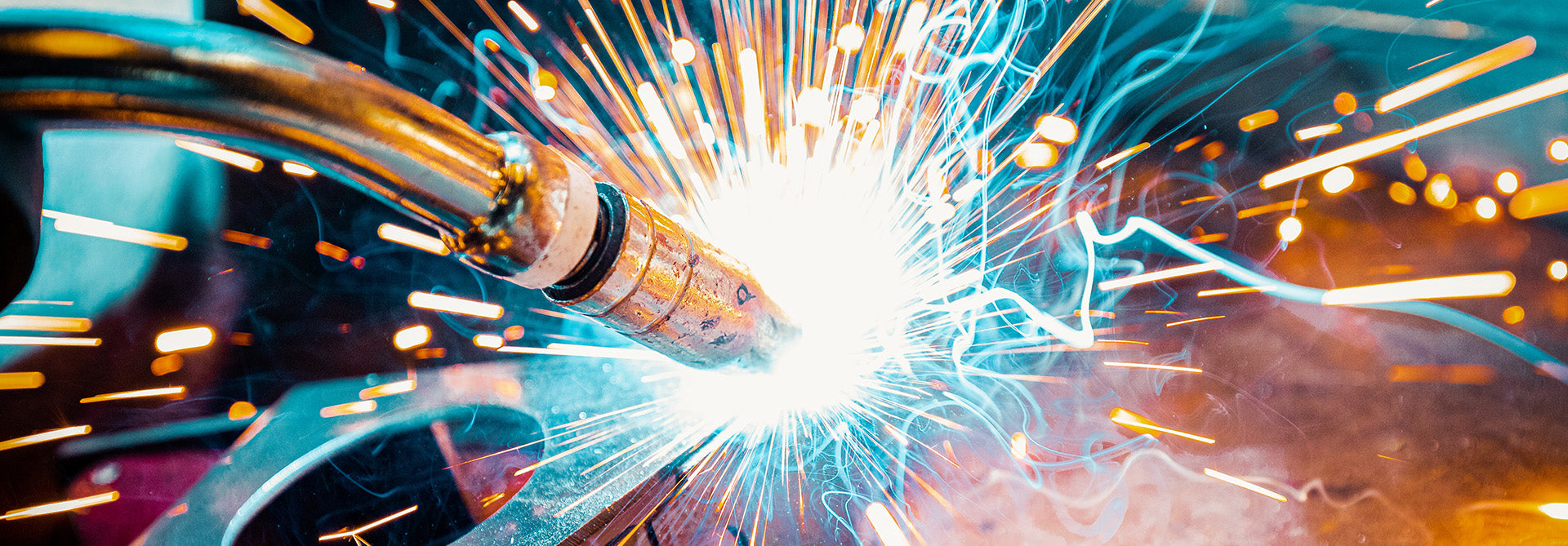Welding work on classic cars is as much of an art as it is a science. There’s long been a debate over which process is best, with experts all over the world weighing in. We’re here to lay out the facts so you can decide which process should be king.
Stick
While stick machines tend to be the cheapest, they’re by no means the easiest to use. Most welders agree that stick is generally the hardest solution for getting good results in automotive welding. Unless you’re pretty experienced, stick welds tend to look like runny diarrhea before they’re cleaned up. While a grinder can fix that, extra steps can always lead to more complications with classic cars. Stick is also difficult when it comes to thin metal panels compared to other processes.
In reality, only really skilled stick welders use this method for automotive welding (the right way). This is why most of the welding debate focuses on MIG or TIG instead.

MIG Welding
Of all the welding processes with classic cars, MIG vs. TIG is the most debated. We’ll lay out the pros and cons for each, as the decision ultimately falls on your own preferences and abilities.
Here’s the thing about MIG: For the time it takes to learn the process and produce high-quality welds, it’s the best. Honestly, someone can learn MIG welding and produce decent quality welds in a day. With TIG, most beginners can’t produce usable welds anywhere close to that time frame. That’s not to say that becoming a MIG expert is easy, but the ability to create quality welds is easier to accomplish compared to stick and TIG.
There’s also a significant time advantage for using MIG. In most cases, it’s much faster than other processes (generally twice as fast as TIG). If you’re just looking to lay some quick beads, MIG will win almost every time.
For these reasons, a lot of classic car welders stick with MIG for a lot of their work. But you should understand there are some serious issues that you’ll also be facing with this process.
The first disadvantage is the downside of MIG being so fast: It gets really hot. That’s no big deal when you’re welding ½ inch mild steel, but with classic cars, you’re often dealing with thin metal panels prone to warp or even burn through with too much heat. TIG welding is designed to adjust your amperage (heat) for precision welds, but MIG doesn’t have that same level of control. You’ll need to be strategic about managing your heat (see our guide on welding car panels here). As long as you plan ahead, you should be able to deal with this issue without significant problems.

Another disadvantage of MIG welding is its ability (or lack thereof) to weld aluminum. This may or may not be an issue, because many older cars tend to be built like tanks, using steel. On the other hand, modern vehicles are strategically designed to be weaker in accidents. Basically, this allows newer cars to crumble around the driver, where older cars tended to take a beating like a champ (but put a lot of force on the driver inside). Because of this, the cars you work on may or may not have a lot of aluminum.
You can MIG weld aluminum, although it’s not the same as TIG welding aluminum. You’ll often also need additional equipment, such a spool gun (as aluminum wire is too soft to be fed like normal).
TIG Welding
Here’s where the debate really heats up. TIG welders can come off a little bit elitist. But the truth is, doing TIG well just takes a lot of experience. Many welders try TIG for a few hours and think, “What’s the big deal? These welds are much worse than what I can do MIG welding.” That’s the truth. Until you’ve gained some experience with TIG, a lot of the beads you lay will be basically unusable.
However, once you’ve gotten some skill, TIG solves a lot of the problems with MIG that were mentioned above. For example, TIG welding allows a lot more precision over your heat. With a foot pedal, you can literally adjust your amps while you weld. What this means for classic cars is a lot less worry about warpage and other heat-related issues.
TIG is also the ideal process for aluminum. But be aware, it must be AC TIG welding. If you’re looking for a multiprocess machine that can both MIG weld and TIG aluminum, you’ll want to look at the Multimatic 220 or the ESAB Rebel 205ic. These new additions to the market are some of the first multi process machines able to AC and DC TIG weld.
As for the cons of TIG welding, speed is the first one that most welders bring up. And it’s true, the precision does come at the cost of being able to hold down that trigger and just fly like with MIG welding. Experts like Mr. TIG (Wyatt Swaim) like to point out that TIG also requires very little clean up, especially for classic cars, where any sort of warpage or spatter needs to be taken care of. Ultimately, the overall speed of each process will come down to experience, so it’s best to weigh your familiarity with each method.

No matter which process you choose, the quality of your equipment will be one of the biggest deciding factors. The best welder in the world can’t produce quality welds with a bad machine. If you’re looking to try a new process or up your game, make sure you check out the only online store specifically designed for automotive welders like yourself. Weld My Ride has the best prices, the best brands and excellent customer support. Check out their current deals and full selection here.







